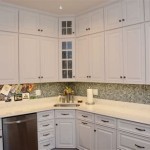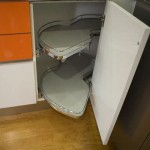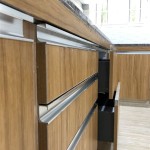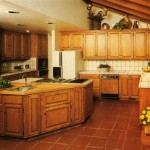Storage Boxes For Kitchen Cupboards With Lids: Optimizing Kitchen Organization
Kitchen organization is a critical aspect of maintaining an efficient and enjoyable cooking environment. Optimizing space and ensuring ingredients and tools are easily accessible can significantly reduce stress and improve culinary productivity. Storage boxes for kitchen cupboards, especially those equipped with lids, represent a versatile solution to address these organizational challenges. The implementation of these boxes can transform cluttered cabinets into streamlined, functional spaces. This article explores the benefits, types, selection criteria, and practical applications of storage boxes with lids in the kitchen.
Benefits of Using Storage Boxes with Lids
The advantages of utilizing storage boxes equipped with lids extend beyond mere tidiness. They offer several crucial benefits that contribute to a more organized, hygienic, and efficient kitchen.
One primary benefit is
protection from pests and contaminants.
Kitchen cupboards can be vulnerable to intrusions from insects, rodents, and dust. Lidded storage boxes create a physical barrier, safeguarding food items and utensils from these potential hazards. This is particularly important for dry goods like flour, sugar, pasta, and cereals, which can easily become infested if left unprotected. By providing a sealed environment, storage boxes help maintain the quality and safety of these ingredients.Another significant advantage is
space optimization.
Kitchen cupboards often suffer from inefficient use of vertical space. Storage boxes, especially stackable varieties, allow for the maximization of this space. They enable the creation of organized tiers, separating different types of items and preventing them from becoming jumbled together. This vertical organization makes it easier to locate and retrieve items, reducing clutter and improving accessibility.Furthermore, storage boxes with lids contribute to
enhanced food preservation.
Certain food items, such as open bags of chips, cookies, or crackers, tend to lose their freshness rapidly when exposed to air. Lidded boxes provide an airtight or near-airtight seal, minimizing air exposure and preserving the texture and flavor of these items for a longer period. This reduces food waste and saves money by preventing spoilage.Finally, the use of storage boxes provides a
uniform and aesthetically pleasing appearance
within the cupboards. A collection of mismatched containers and open packages can create a visually chaotic and unorganized impression. Matching storage boxes, on the other hand, create a sense of order and uniformity, contributing to a more visually appealing and calming kitchen environment.Types of Storage Boxes with Lids for Kitchen Cupboards
The market offers a wide array of storage boxes with lids, each designed with specific materials, shapes, and features to cater to diverse organizational needs. Understanding the different types available is crucial for selecting the most appropriate options for a given kitchen.
Plastic storage boxes
are among the most common and widely available. They are typically made from polypropylene (PP) or polyethylene (PE), both of which are durable, lightweight, and food-safe plastics. Plastic boxes are often transparent or translucent, allowing for easy identification of contents without opening the lid. They are also available in various colors and sizes, providing flexibility in terms of aesthetics and capacity. The lids may feature snap-on, clip-on, or screw-on mechanisms, offering varying degrees of airtightness. Plastic boxes are generally budget-friendly and easy to clean, making them a practical choice for everyday kitchen storage.Glass storage boxes
offer a more premium and aesthetically pleasing option. They are typically made from borosilicate glass, which is heat-resistant and less prone to shattering than conventional glass. Glass boxes are non-reactive, meaning they will not leach chemicals into food or absorb odors. They are also microwave and dishwasher safe, making them convenient for both storage and reheating. The lids of glass boxes may be made from glass, plastic, or bamboo, and often feature silicone seals to create an airtight closure. While glass boxes are generally more expensive than plastic options, they offer superior durability, hygiene, and aesthetics.Stainless steel storage boxes
are known for their exceptional durability and resistance to corrosion. They are ideal for storing dry goods and utensils that require protection from moisture and light. Stainless steel boxes are non-reactive, easy to clean, and resistant to odors and stains. They often feature tightly sealed lids to maintain freshness. While they are not transparent, labels can be easily affixed to the exterior for identification. Stainless steel boxes offer a modern and sophisticated look, making them a stylish addition to any kitchen cupboard.Silicone storage boxes
are a flexible and space-saving option, particularly useful for storing leftovers or portioning ingredients. They are typically made from food-grade silicone, which is heat-resistant, microwave-safe, and freezer-safe. Silicone boxes can be collapsed when empty, saving valuable storage space. The lids usually feature a tight seal to prevent leaks and maintain freshness. Silicone boxes are easy to clean and available in various colors and sizes, making them a versatile choice for a variety of kitchen storage needs.Ceramic storage jars with lids
are often used for storing coffee, tea, sugar, or spices. They offer a decorative and functional storage solution that can be displayed on countertops or stored in cupboards. Ceramic jars are typically made from stoneware or porcelain and can be glazed in a variety of colors and patterns. The lids may be made from ceramic, wood, or metal, and often feature a silicone seal to maintain airtightness. Ceramic jars are ideal for storing items that need to be protected from light and moisture.Key Considerations When Selecting Storage Boxes with Lids
Choosing the right storage boxes with lids for kitchen cupboards requires careful consideration of several factors, including material, size, shape, lid design, and storage needs. A thoughtful selection process will ensure that the chosen boxes provide optimal organization and functionality.
The
material
of the storage box is a primary consideration. As discussed earlier, plastic, glass, stainless steel, silicone, and ceramic each offer distinct advantages and disadvantages. Consider the intended use of the box and the specific properties of each material when making a decision. For example, if storing delicate items that need to be protected from impact, a plastic box might be preferable to a glass box. If storing food items that need to be protected from light and moisture, a stainless steel or ceramic container may be the best option.The
size and shape
of the storage box should be appropriate for the items being stored and the dimensions of the kitchen cupboards. Measure the available space in the cupboards before purchasing any boxes to ensure they will fit comfortably. Consider the shape of the items being stored and choose boxes that are appropriately shaped to maximize space utilization. For example, rectangular boxes are generally more space-efficient than round boxes when storing dry goods like pasta or cereal.The
lid design
is another important factor to consider. The lid should fit securely and provide an airtight or near-airtight seal to prevent moisture, pests, and contaminants from entering the box. Different lid mechanisms, such as snap-on, clip-on, screw-on, and silicone seals, offer varying degrees of airtightness. Choose a lid design that is appropriate for the type of items being stored. For example, items that are highly susceptible to spoilage, such as opened bags of chips or crackers, require a tightly sealed lid to maintain freshness.Consider the
stackability
of the storage boxes. Stackable boxes allow for the maximization of vertical space in the cupboards. Look for boxes with flat lids or interlocking features that enable stable stacking. This is particularly important for smaller kitchens with limited cupboard space.The
transparency
of the storage box can also be a factor. Transparent or translucent boxes allow for easy identification of contents without opening the lid. This can save time and effort when searching for specific items. However, if storing items that need to be protected from light, opaque boxes may be preferable.Finally, consider the
ease of cleaning
of the storage box. Choose boxes that are dishwasher-safe or easy to clean by hand. This is particularly important for boxes that are used to store food items. Regular cleaning will help prevent the buildup of bacteria and maintain hygiene.Practical Applications of Storage Boxes with Lids in the Kitchen
The versatility of storage boxes with lids allows them to be used in a variety of ways to optimize kitchen organization. From storing dry goods to organizing utensils, these boxes can transform cluttered cupboards into efficient and functional spaces.
One common application is
storing dry goods
. Flour, sugar, pasta, rice, cereals, and other dry ingredients can be stored in airtight storage boxes to protect them from pests, moisture, and contaminants. Labeling the boxes clearly will help identify the contents and prevent confusion. Consider using different sizes of boxes to accommodate different quantities of ingredients.Storage boxes are also useful for
organizing spices and herbs
. Small, airtight boxes can be used to store individual spices and herbs, preventing them from losing their flavor and aroma. Labeling the boxes clearly will make it easy to find the desired spice when cooking. Consider using a spice rack or tiered organizer to maximize space in the cupboard.Storing leftovers
is another practical application of storage boxes with lids. Leftover meals can be stored in airtight containers in the refrigerator to prevent them from spoiling. Glass or silicone boxes are particularly well-suited for storing leftovers, as they are microwave-safe and easy to clean. Be sure to label the boxes with the date the leftovers were stored to ensure they are consumed within a safe timeframe.Storage boxes can also be used to
organize baking supplies
. Baking ingredients such as chocolate chips, sprinkles, nuts, and dried fruit can be stored in airtight containers to maintain their freshness. Consider using clear containers to easily identify the contents. This will help to optimize space in the pantry and make baking easier and more enjoyable.In addition to food storage, storage boxes can also be used to
organize kitchen utensils and gadgets
. Small boxes can be used to store measuring spoons, measuring cups, whisks, spatulas, and other small kitchen tools. This will help to keep the cupboards organized and prevent these items from getting lost or damaged. Consider using labeled dividers within the boxes to further organize the contents.
Kitchen Cabinet Storage Box With Lid Handle

Kitchen Cabinet Storage Box With Lid Handle

Kitchen Plastic Cupboard With Lid And Tableware Singapore Ubuy

Fridge Box Holder Kitchen Clear Organiser Cupboard Food Storage Container W Lid

Kitchen Cabinet Storage Box With Lid Handle

Kitchen Cabinet Storage Box With Lid Handle
Hot Ing Dish Storage Box Rack Kitchen Organiser With Cover Cupboard Large Size Plate Drying Shelf Tableware Household Chopsticks Countertop

Kitchen Pantry Food Plastic Container Bpa Free Storage Box Easy Lock Lid
Clarity Front Opening Stackable Bin

Kitchen Fridge Box Holder Rack Cupboard Storage Organiser Shelf Basket W Lid








